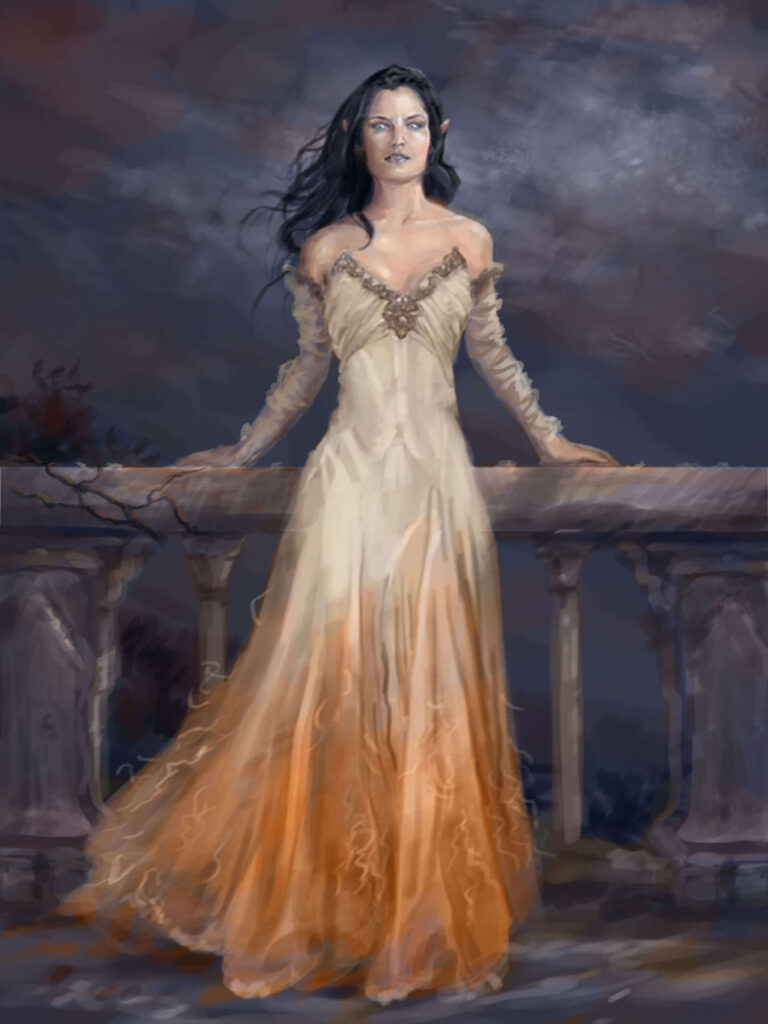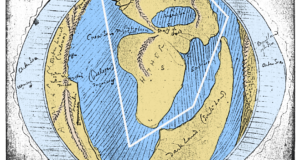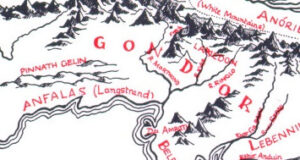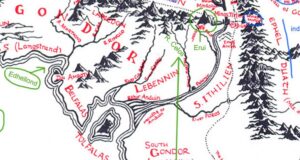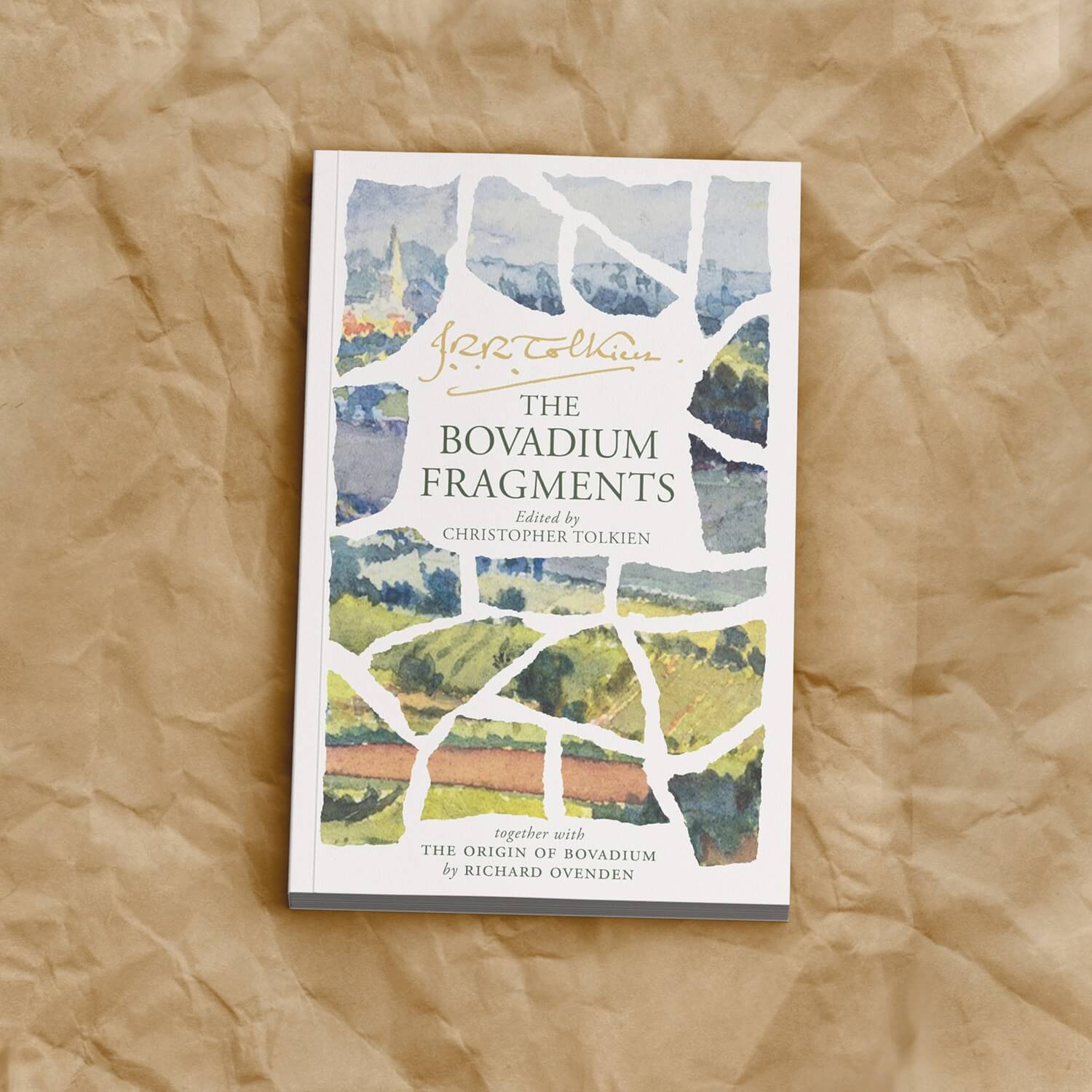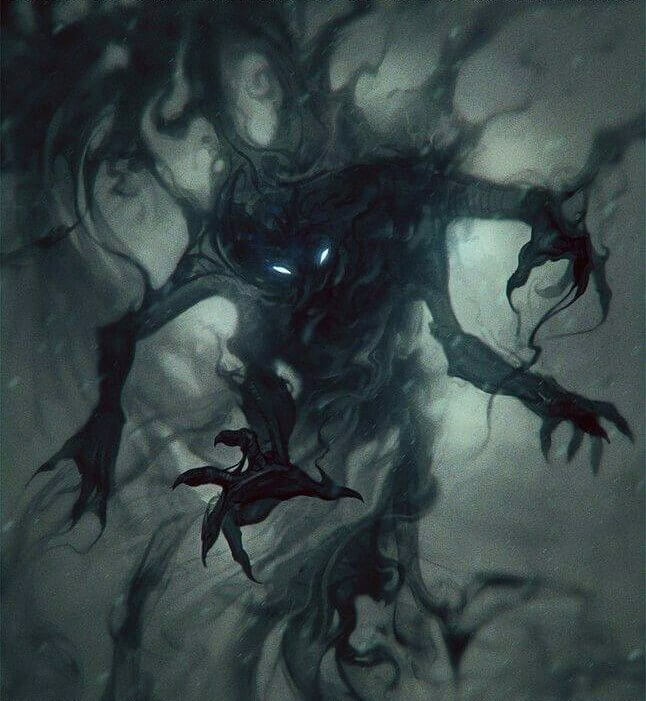
این مقاله به فارسی نیز وجود دارد. در اینجا آن را مطالعه نمایید.
Far, far below the deepest delving of the Dwarves, the world is gnawed by nameless things. Even Sauron knows them not. They are older than he.
The world created by J. R. R. Tolkien is full of wonders and deep themes in which you can find new meanings and contents each time you read it and you can find visible and invisible connection between these themes. At first, this article was going to explain a short but interesting fact about the magical powers of Melian and Sauron, but based on something that people of Middle-earth might would call chance, the author stumbled upon a section of Morgoth’s Ring (10th Volume of The History of Middle-earth) which head read and translated “Arda, Morgoth’s Ring” article before but never made the connection, but today he was looking for something else there and found the answer to what are those Nameless Things in Moria is, which resulted in this article.
In all published material about Legendarium “Nameless Things” which was call by Gandalf are named once, but this doesn’t mean Tolkien never talked about them or there are no other indirect mentions, without us knowing! The only direct mention of them is in The Two Towers (III, 5):
They were not made by Durin’s folk, Gimli son of Glóin. Far, far below the deepest delvings of the Dwarves, the world is gnawed by nameless things. Even Sauron knows them not. They are older than he. Now I have walked there, but I will bring no report to darken the light of day.
Ancient, evil and horrible creatures which even Gandalf is afraid of talking about them! How I conclude he feared them is based on some passages of The Lord of the Rings which I’m going to explain soon. First sign is when Gandalf says “Now I have walked there, but I will bring no report to darken the light of day” in which, if you are familiar with The Lord of the Rings books, you know darkening of light is sign of immense power or huge evil forces which there a lot of examples to mention. We will get to it soon. Second reason for saying Gandalf felt fear is how he explains his confrontation with Balrog but he deliberately leaves out the explaining of those Nameless Things.
Gimli: ‘Come, Gandalf, tell us how you fared with the Balrog!’
‘Name him not!’ said Gandalf, and for a moment it seemed that a cloud of pain passed over his face.
Based on this you can conclude if Gandalf fears explaining dark and painful memories (why he is fearing is in need of another article), he is not going to talk about it. Now let see one instance of darkening of light by evil things in The Fellowship of the Ring (II, 2) when Gandalf reads the inscription of The One Ring in Black Speech in Rivendell; you can find many more of darkening of light as sign of immense power or huge evil forces.
The change in the wizard’s voice was astounding. Suddenly it became menacing, powerful, harsh as stone. A shadow seemed to pass over the high sun, and the porch for a moment grew dark.
And based on these the author believes these nameless things must be on a new level of horrible and evil in which Gandalf doesn’t willingly talks about them; He talks about the Balrog and The One Ring inscription though.
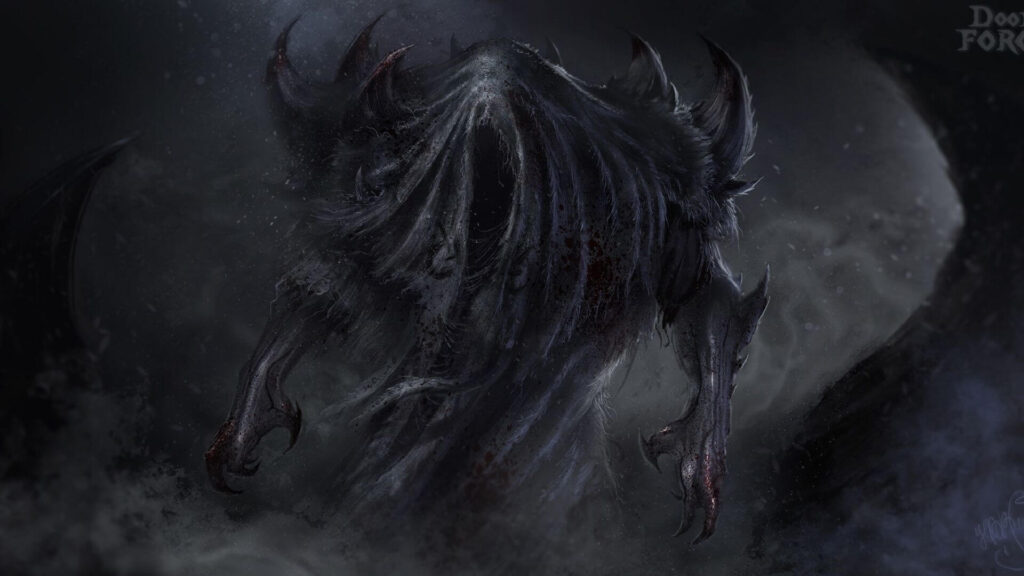
As it said before, in all the published materials about Legendarium “Nameless Things” was mentioned only once, but is there any other mention to them? Author believes there is one mention in The Lord of the Rings and one other in The Hobbit about these nameless things which we might have passed them without second thought. First one is “Watcher in the Water”, the creature who attacks the fellowship in front of the west-gate of Moria and we later in the Book of Mazarbul find out he was the cause of Óin’s death. But how the lake was formed? ‘Sirannon had been dammed and had filled all the valley’ (FotR, II, 4). But why the nameless things and the Watcher should be connected to that lake? Let’s read what Gandalf says about them in The Fellowship of the Ring (II, 4):
‘I do not know,’ answered Gandalf; ‘but the arms were all guided by one purpose. Something has crept, or has been driven out of dark waters under the mountains. There are older and fouler things than Orcs in the deep places of the world.’
What are the dark waters under the mountains? Let see another citation (TTT, III, 5):
‘Long time I fell,’ he said at last, slowly, as if thinking back with difficulty. ‘Long I fell, and he fell with me. His fire was about me. I was burned. Then we plunged into the deep water and all was dark. Cold it was as the tide of death: almost it froze my heart.’
‘Deep is the abyss that is spanned by Durin’s Bridge, and none has measured it,’ said Gimli.
‘Yet it has a bottom, beyond light and knowledge,’ said Gandalf. ‘Thither I came at last, to the uttermost foundations of stone.
And few lines later we have our first and only citation of Nameless Things. As you can see from the above quote, Gandalf fell in the same waters he mentioned before, under the mountains in which Nameless Things live, as where Watcher in the Water came from or driven out! On a note author believes The Watcher (one of Nameless Things) was driven out rather than just leaving, because Balrog was living there somehow and he knew the place very well, maybe there was a power struggle or something of sort, I leave it to your imaginations. I said balrog knew there and it’s based on the same chapter of citation above:
In that despair my enemy was my only hope, and I pursued him, clutching at his heel. Thus he brought me back at last to the secret ways of Khazad-dûm: too well he knew them all.
Now let us read more about the Watcher and the difference between book and Peter Jackson’s adaptation:
Frodo felt something seize him by the ankle … as if a host of snakes were swimming up from the southern end.
Out from the water a long sinuous tentacle had crawled; it was pale-green and luminous and wet. Its fingered end had hold of Frodo’s foot, and was dragging him into the water. Sam on his knees was now slashing at it with a knife.
The arm let go of Frodo, and Sam pulled him away, crying out for help. Twenty other arms came rippling out. The dark water boiled, and there was a hideous stench.
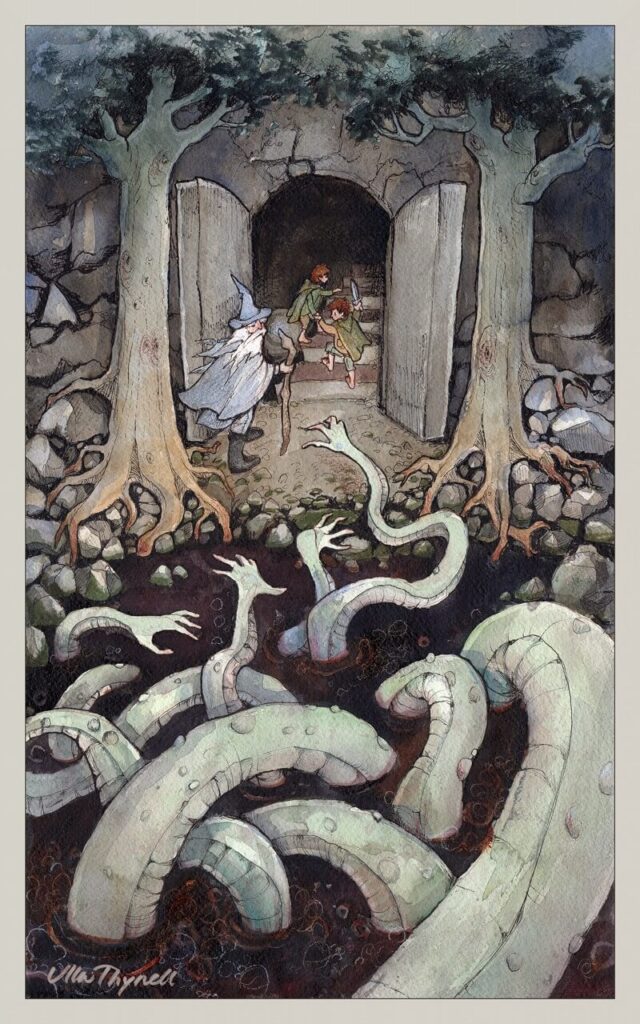
Watcher in the Water by Ulla Thynell
Differences you need to focus are there is no head nor body visible for that creature, and there are differences about it arms/tentacles, but that thing in Peter Jackson’s adaptation is more like a gigantic Octopus.
For the second mention, we need to look into The Hobbit (Ch. 5) and see if we can find a connection there or not.
also there are other things more slimy than fish. Even in the tunnels and caves the goblins have made for themselves there are other things living unbeknown to them that have sneaked in from outside to lie up in the dark. Some of these caves, too, go back in their beginnings to ages before the goblins, who only widened them and joined them up with passages, and the original owners are still there in odd corners, slinking and nosing about.
By reading this we find the final connection between Nameless Things and Watcher in the Water and how they are the same, making halls (or gnawing stone), making tunnels and they are slimy like the Watcher.
This question emerges now: What is the real origin of these creatures? They definitely can’t be Elves, Ents, Humans, Dwarves, Hobbits, Werewolves and other more known species that we know of. We know that evil can’t create on it’s own, so no, Melkor didn’t made them. Are they Ainur? It definitely can answer why they are older than Orcs, but this makes a problem, if they are, they have the same age as Sauron and can’t be older than him. Are they something like Tom Bombadil? The answer is still no, Tom is a special character and a mystery which Tolkien intended it to be like that, and besides, we figured out they are evil, Tom is not evil, Tom can’t be evil. Now only two option remains, maybe they are creatures of Void, like Ungoliant; or maybe they are something else, something Tolkien explained later and answers all of these purposefully semi-hidden clues, and maybe when we find it, it can even explain Ungoliant! In Morgoth’s Ring (Myths Transformed, VII, Notes on motives in the Silmarillion, iii) Christopher brought us this note of his father:
Out of the discords of the Music – sc. not directly out of either of the themes,(17) Eru’s or Melkor’s, but of their dissonance with regard one to another – evil things appeared in Arda, which did not descend from any direct plan or vision of Melkor: they were not ‘his children’; and therefore, since all evil hates, hated him too. The progeniture of things was corrupted.
۱۷- The Three Themes of Iluvatar in the Music of the Ainur are here treated as a single theme, in opposition to the discordant ‘theme’ of Melkor.
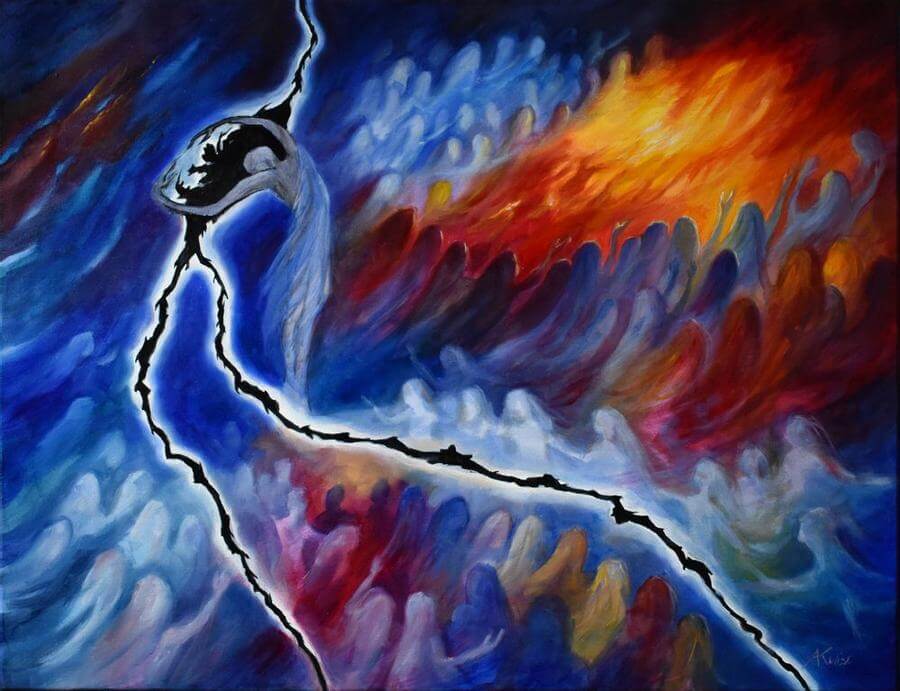
The Discord of Melkor by kuliszu
This paragraph is immensely important, because it can answer the question we started to find from the beginning of this article. If these evil things are created the same time as the Music of the Ainur (if you don’t know what Music of the Ainur is, you need to read first chapter of The Silmarillion), this means they were in Eä before Sauron could enter it and as we know Sauron (and other Ainur) where in Timeless Halls (emphasis on Timeless) which means they were out of influence of time, in contrast to things in Eä which are under influence of Time, so they were aging (numerically) and became Older than Sauron or Orcs. And that is description of what kind of creatures that we know of? Yes, Nameless Things! Those who gnaw on earth and live in the deepest of places and even Sauron knows them not, and they are older than him. The same creatures we found them mentioned in The Lord of the Rings and The Hobbit, the Watcher and things living unbeknown to Orcs.
As I said in the beginning, originally this article was going to be about something else, and we are going to explain it. Do you think this theme of Music’s dissonance is a new thing? Or we had this concept before? If we look closely at this paragraph in The Silmarillion (Ch. 19):
Beyond lay the wilderness of Dungortheb, where the sorcery of Sauron and the power of Melian came together, and horror and madness walked.
- Melian of the Silmarillion by AndrewRyanArt
- Sauron by Insant
Isn’t it fascinating? We know both Melian and Sauron are experts at singing and Music and out of discord of their Music (just like Eru and Melkor) it wrapped reality so much, almost no one can’t handle it and caused Horror and Madness walking there; Walking is an interesting choice there in my opinion, maybe it created something more and had other effects, more than wrapping reality.
At last if we proceed reading the last citation in the book, we find out beside that Horror and Madness caused by their dissonance of music, the spiders of the fell race of Ungoliant lived there. Why they chose that place? Maybe it was similar to their nature and origin? Maybe they felt home because of it? And maybe they are those progenitures that Tolkien wrote about? And we know who was their mother and she might not be of void, she was created Out of the discords of the Music.
Tolkien tales are full of wonders and the level of attention and small bits of information is what made the joy of reading, immersing and searching in this world, tenfold. A world which has something for almost everyone.
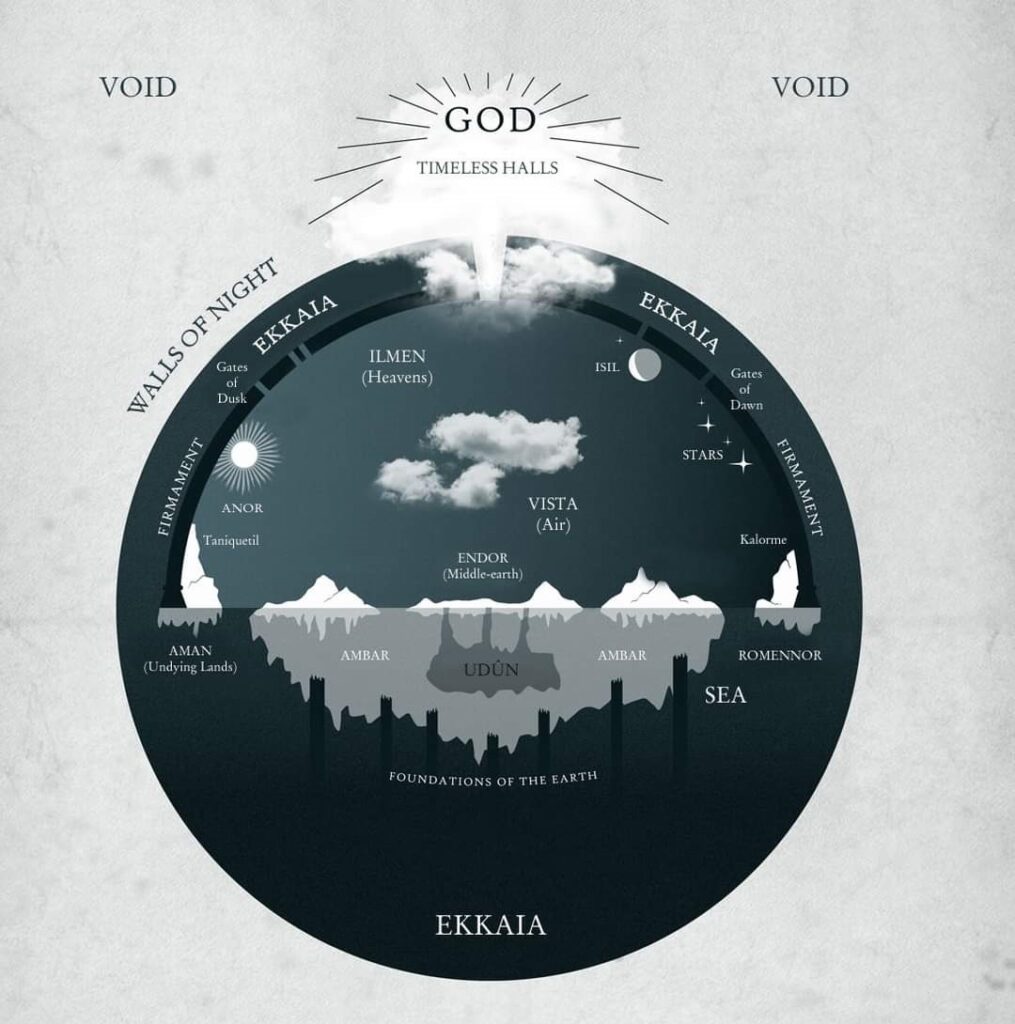
 آردا، دنیای تالکین سایت طرفداران تالکین در ایران. جایی برای گفتگو در مورد ارباب حلقه ها و دیگر آثار تالکین به زبان فارسی
آردا، دنیای تالکین سایت طرفداران تالکین در ایران. جایی برای گفتگو در مورد ارباب حلقه ها و دیگر آثار تالکین به زبان فارسی
